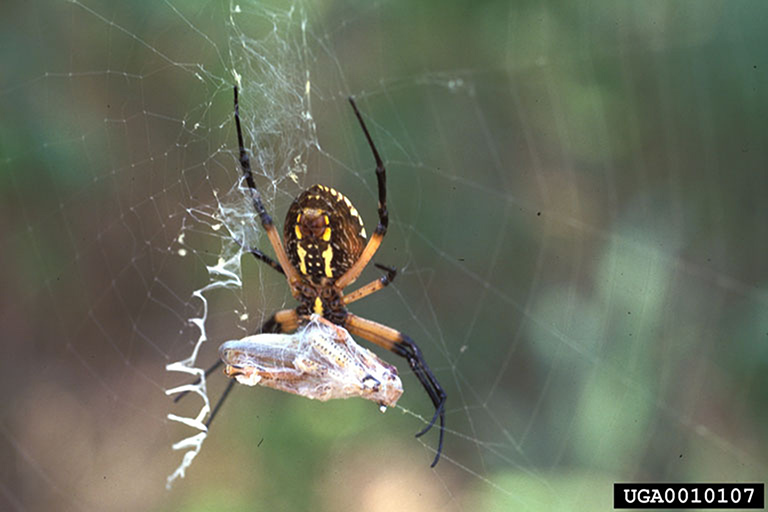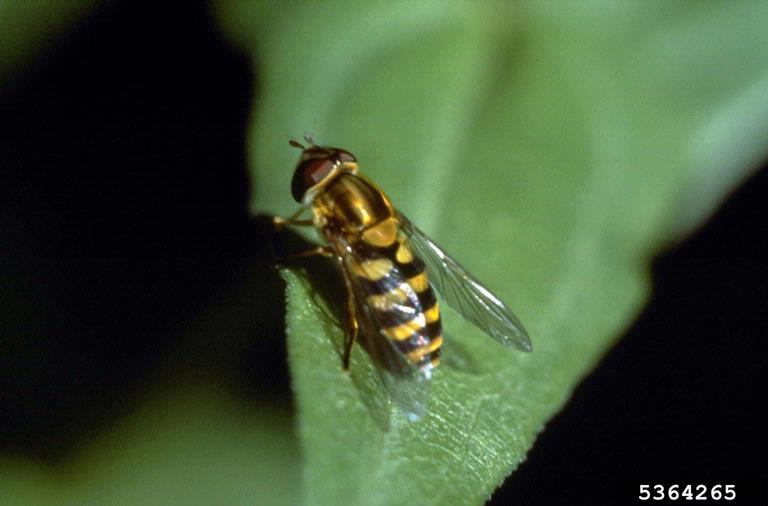Conserving beneficial insects is everyone's business, from landscapers, to consumers, to state and federal land managers. Biodiversity and conservation practices are key to a healthy environment and reducing beneficial insect and pollinator decline. Natural predators are a long-lasting, natural, non-toxic solution that will further the ecological diversity of your green space. Natural predators can be divided into two groups – predators and parasitoids. Many are attracted to flowering plants for pollen and nectar and contribute to pollination services.
Beneficial insects, or good bugs, include predators, parasitoids and pollinators
Less than 1% of insect species are considered harmful to health, homes, animals, food and landscapes (such as aphids and grasshoppers) (Hill, Dennis 1997 The Economic Importance of Insects). Beneficial insects are found in many insect orders including social and solitary wasps, parasitic wasps, and bees (Hymenoptera, (parasitic wasps, predatory wasps, bees), Coleoptera (beetles), Hemiptera (true bugs), Lepidoptera (butterflies and moths), and Diptera (flies). Beneficial insects help by preying on or parasitizing insect pests and also pollinating plants.
Principles of Beneficial Insect Conservation
- Habitat Conservation is a priority for safeguarding beneficial insects. Unfortunately, only 1% of original prairie habitat is left in Minnesota. Many species depend on this type of habitat and the species of plants that inhabit it. If we can increase native prairie habitat in urban and rural areas, the insects will come along with it.
- Season-long shelter: Brush, leaf and mulch piles, logs, and overgrown areas provide safe places for predatory insects like lady beetles to overwinter. Wait until late spring (May) to clean backyard gardens to allow time for the insects to exit their overwintering habitat.
- Food: Plant diverse flowers that bloom from early spring through fall. Insect predators like lady beetles feed both on insects and pollen. Parasitic wasps are nectar feeders.
- Avoiding the use of pesticides is one of the most important conservation decisions we can make. Pesticide drift and contamination from industrial agriculture is a major contributer to butterfly die offs.
Steps to Conserve Beneficial Insects
- Provide host and nectar plants that bloom from early spring through fall. Insect predators like lady beetles feed both on insects and pollen, whereas parasitic wasps and predatory wasps need nectar to fuel their flight. Remember to source plants and trees that have NOT been treated with pesticides.
- Include multiple habitats for different needs. Use biodiversity as a guide to include a variety of water, protection, sun, flowers, grasses, shrubs and trees.
- Reduce or stop using pesticides. Instead, accept some plant damage, build biodiversity and soil health for natural pest control. If pesticides are necessary, use more benign spot treatments and alternative control methods such as oils, soaps, and microbial insecticides such as Bacillus thuringiensis (Bt). Remember that oils and soaps still kill caterpillars if sprayed directly on them and caterpillars also will die if they feed on plants treated with a Bt formulation that is toxic to them.
- Use integrated pest management (IPM) to control insects and diseases:
- When choosing plants, pick naturally resistant plants.
- Inspect and monitor your plants' health on a regular basis, before problems are out of control.
- Use non-chemical methods such as pruning, hand-picking, covering plants with netting, or other means to reduce pest pressure.
- Instead of routinely spraying for insects, spot treat problems with soft pesticides such as insecticidal soaps, oils, and biorational products such as spinosad.
- Use biological control. When scouting plants for insect pests, look for beneficial insects like lady beetles as well. Beneficial insects like lady beetles, assasin bugs, and lacewing larvae are "biological control agents". Keep in mind that all insect species are also suppressed by naturally occurring organisms and environmental factors, with no human input. If beneficial insects are present, wait to spray insecticides to see if the beneficial insects control the pest insects or use specific insecticides that only target the pest insect.
- Plant both annual and perennial plants that have different flower types, including:
- Umbels. umbrella-like clusters such as dill, angelica, fennel and yarrow.
- Composites. These have a center of tiny true flowers surrounded by rays including sunflowers, coneflowers, daisies, cosmos and asters.
- Spikes. Plants with flowers similar to lavendar, goldenrod, liatrus and hyssop.
- Cups. Small insects won't get trapped in the almost flat cups of evening primose, viola or buttercups.
Attract this top list of beneficial insects and spiders for natural pest control to your yard, garden and landscape:
Predatory Wasps
Predatory wasps hunt for various insect larvae to bring back to their nests to feed their developing larvae. There are both social (yellowjacket) and solitary (cicada killer) predatory wasps.
Cicada Killer
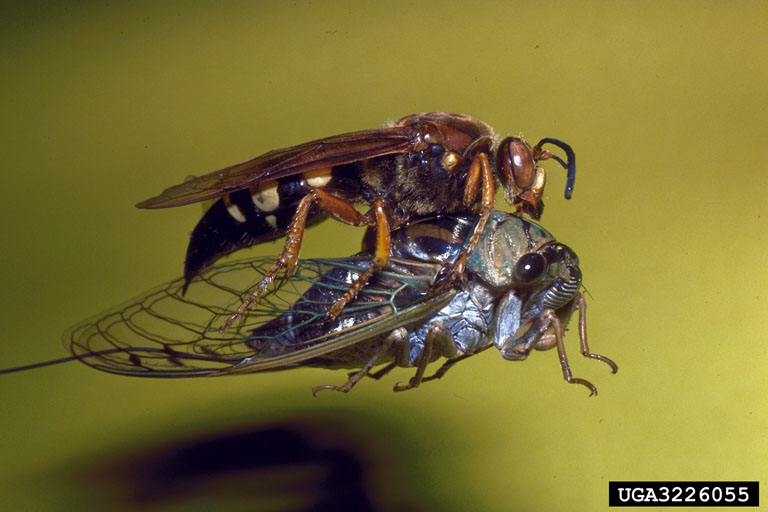
Great Black Wasp
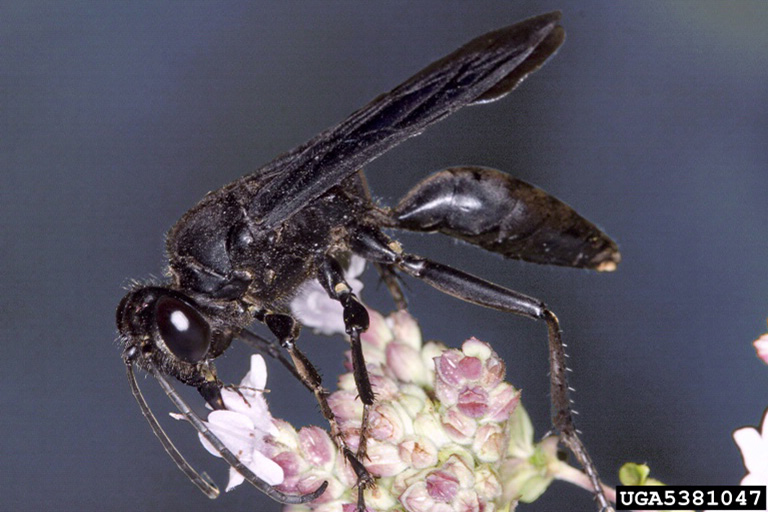
Black and Yellow Mud Dauber
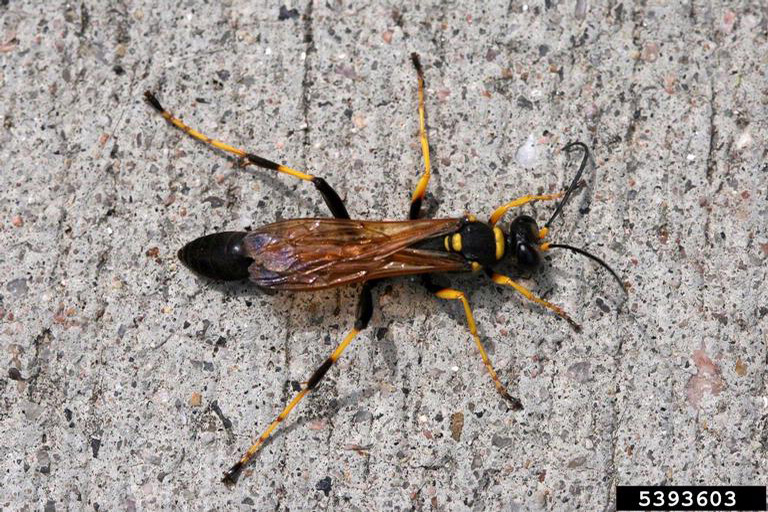
Parasitoids
Parasitoids are wasps that lay eggs in or on their preferred insect larva or pupa. The targeted insect becomes a host for the developing parasitoid larva, which in turn kills the host. Most parasitoids are very small and may go unnoticed.
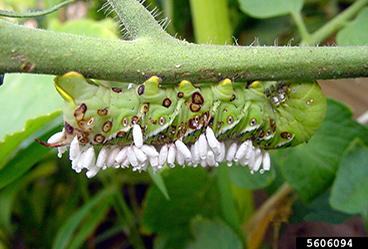
Coccoons of Cotesia congregata on a tomato hornworm, a common garden pest. photo: Gerald Holmes, Strawberry Center, Cal Poly San Luis Obispo, Bugwood.org
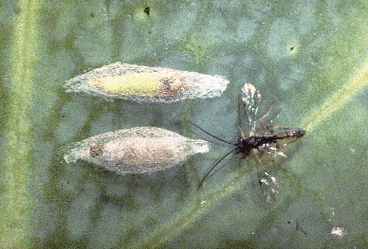
Diadegma insulare adult wasp next to diamondback moth (DBM) pupae. DBM are a pest of cabbage and other Brassica vegetables. photo: W.D. Hutchison, Dept. of Entomology, UMN.
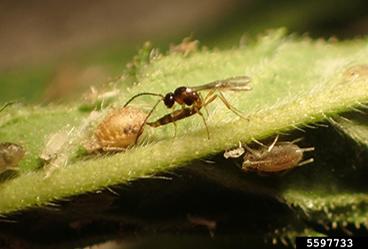
Aphidius ervi ovipositing eggs in an aphid. Parasitized aphids become gray-brown "mummies"; a papery empty case. photo: Melissa Schreiner, Colorado State University, Bugwood.org
Beetles
Beetles are predators of insect eggs, aphids, scales, and mealybugs.
Lady Beetles
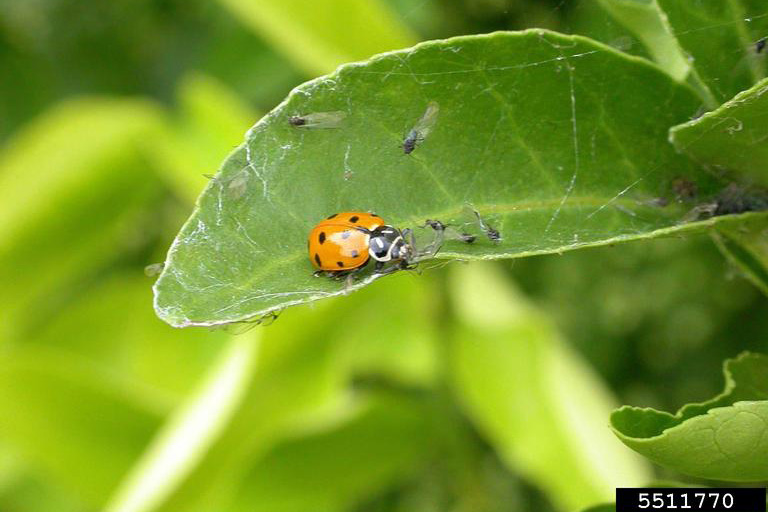
Ground Beetles
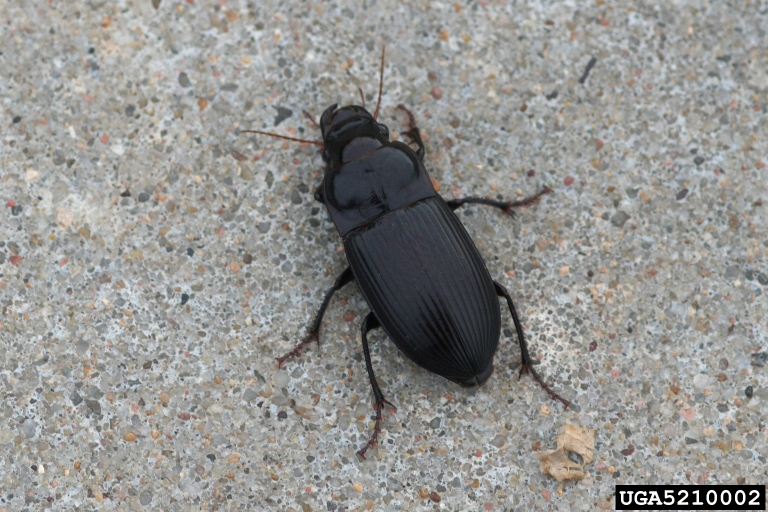
Tiger Beetles
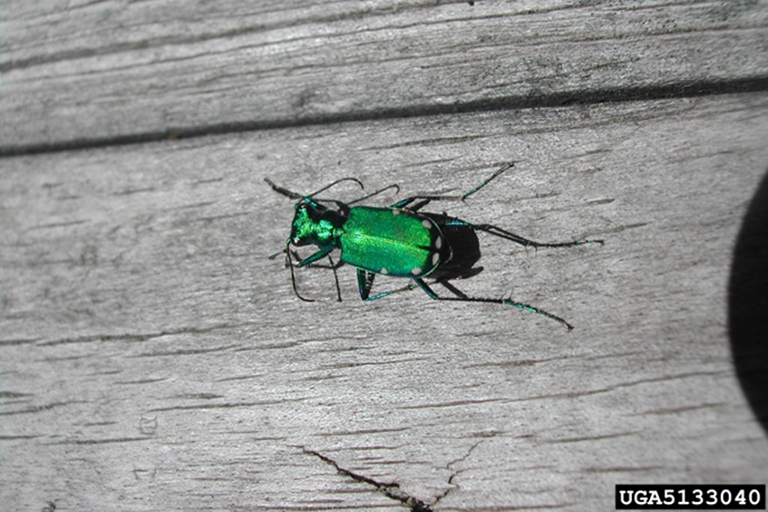
True Bugs
True bugs are insects with piercing-sucking mouthparts. Most true bugs are predators of soft bodied insects such as aphids.
Pirate Bugs
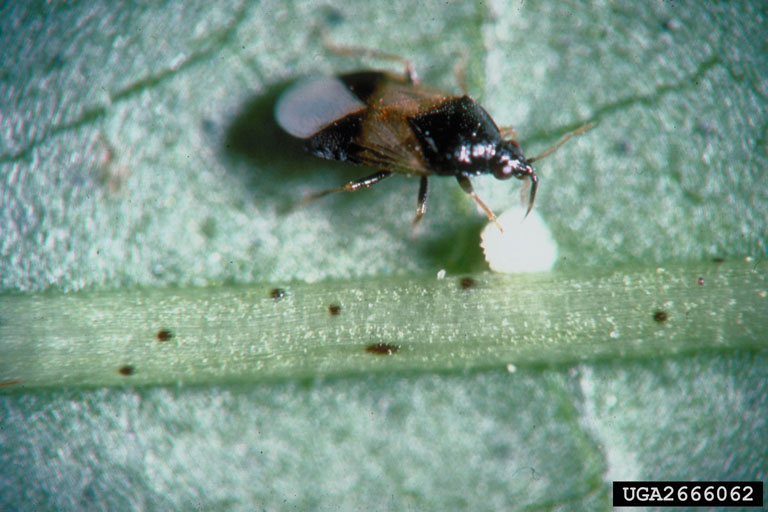
Damsel Bugs
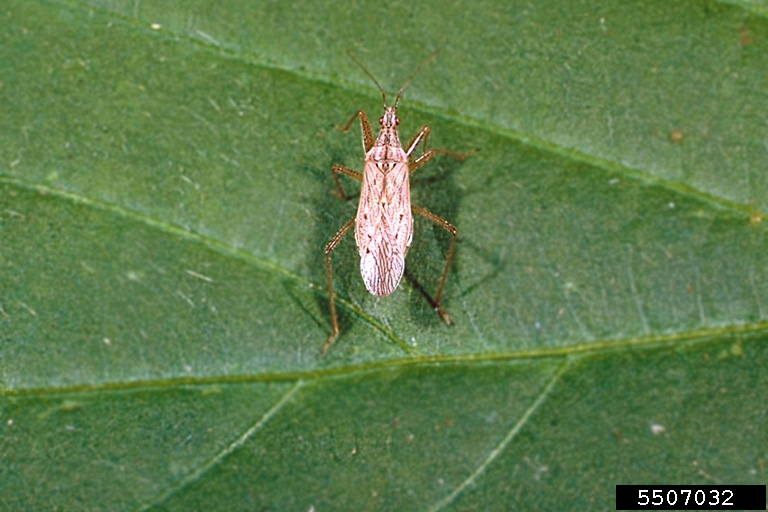
Spined Soldier Bug
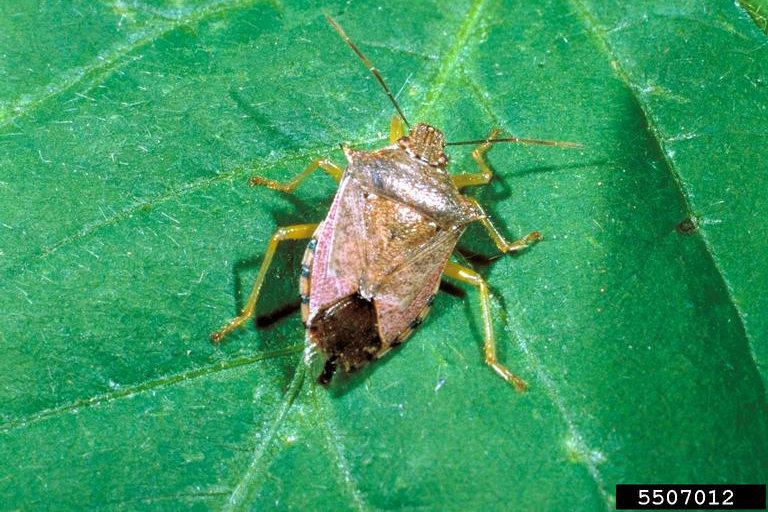
Additional Important Predators
Predatory Flies
Green and Brown Lacewings
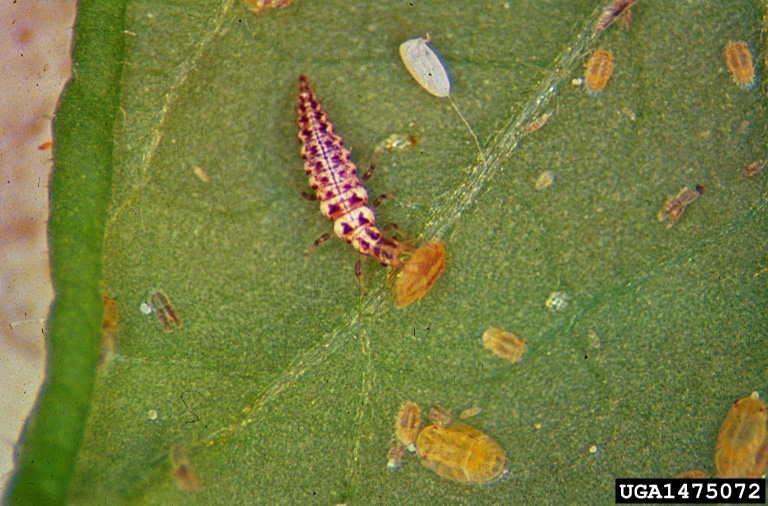
Spiders
